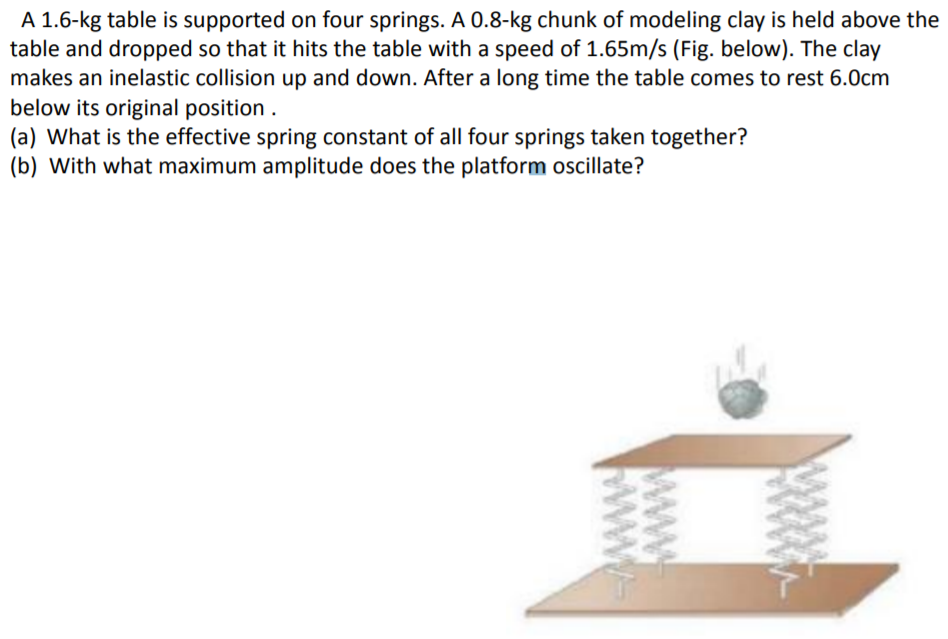A 1.6-kg table is supported on four springs. A 0.8−kg chunk of modeling clay is held above the table and dropped so that it hits the table with a speed of 1.65 m/s (Fig. below). The clay makes an inelastic collision up and down. After a long time the table comes to rest 6.0 cm below its original position. (a) What is the effective spring constant of all four springs taken together? (b) With what maximum amplitude does the platform oscillate?



You'll get a detailed, step-by-step and expert verified solution.
 Work With Experts to Reach at Correct Answers
Work With Experts to Reach at Correct Answers